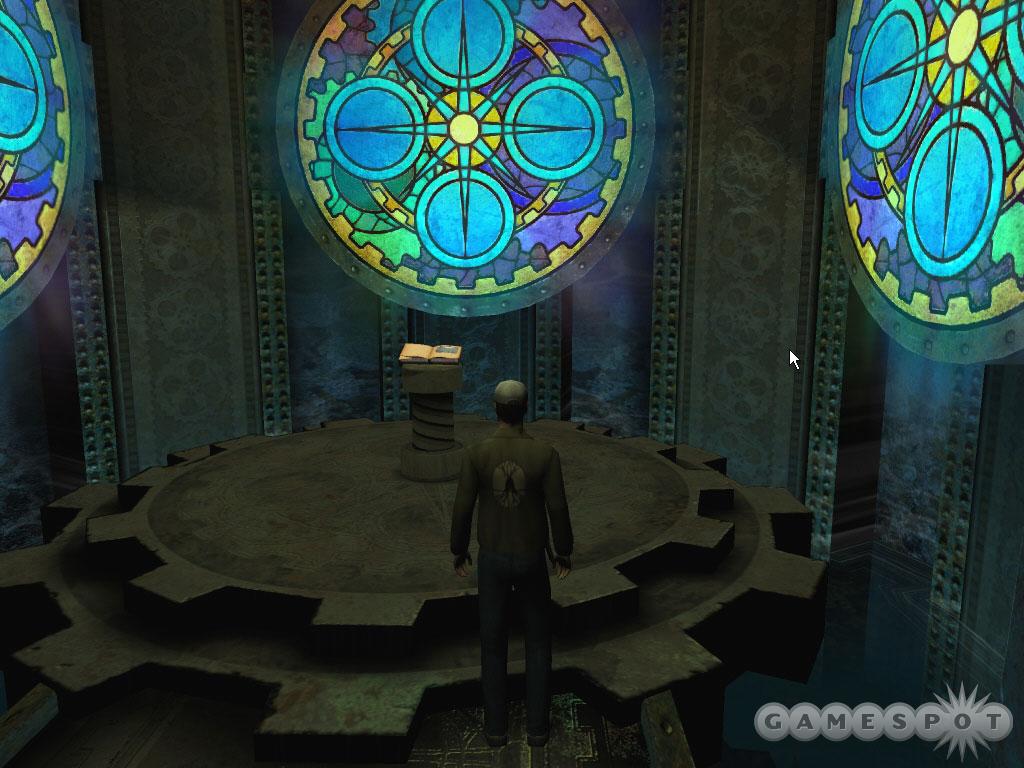Like the final episodes of a cult-favorite TV show, Uru: The Path of the Shell may not win over many new followers, but it will surely be appreciated by fans of the original, first-run material. The expansion pack adds two new worlds (known as "ages" in the Myst universe) to last year's Uru: Ages Beyond Myst--which did not feature its promised online components but still ended up being a solid and challenging adventure game that looked great and sounded fantastic. The Path of the Shell's new content fits in quite well with Uru, which shouldn't be surprising, considering that much of it was intended to be released in the form of free expansions for the online game.

Uru: Ages Beyond Myst took the surprising approach of completely changing the way Myst looked and played by trading away the series' traditional first-person view and 2D full-motion video sequences in favor of a fully 3D world in which your character was required to run and jump about to solve certain puzzles. Like in Uru, you'll explore the world of the D'ni by linking from the Relto Age, a hub area that links to the expansion's new ages of Ahnonay and Er'cana. The Path of the Shell also uses the same minimalist interface, so, like with Uru, you don't have an inventory to carry items in. However, you do have a journal, which you'll need to help you with some of the game's new puzzles, some of which require a bit more backtracking and some of which are slightly more tedious than those of the original game. To compensate, The Path of the Shell also adds shell pages, which act as waypoints that you can jump to and from as you travel through the ages (rather than always returning to the very beginning of an age).
The Path of the Shell adds a new set of tomes to your Relto home area, which includes lore books that contain valuable hints on how best to complete your quests. These books are referred to in scattered clue notes--which point to pages and passages--that are pasted along the walls and caverns of the new ages for you to refer to, though you can always use your journal to add your own personal notes. These clues provide very slight help in how to approach the game's logic puzzles, which are otherwise just as cryptic as those of Uru. Since you play as an explorer who is visiting the excavated ruins of a long-dead civilization, the only context or clues you get for the game's obscure and abstract puzzles are the clue notes and the occasional letter or note you'll find lying about. Unfortunately, several more of the expansion's puzzles require you to run and jump past certain obstacles or call for you to manipulate environmental objects by nudging them. And just like with Uru, you'll wish your character did have an inventory or that you could at least click on objects to manipulate them manually rather than by awkwardly backing up and turning around. As a result, some puzzles end up being as annoying as they are challenging.
The two new ages, Ahnonay (a waterlogged world) and Er'cana (a desert world full of huge machinery), seem to fit in well with the original game's look and feel. As in Uru, the different environments suggest the abandoned ruins of a civilization that was built on huge industrial machinery and new-age masonry. Similarly to Uru, if you look closely enough, you'll find a few spots in which relatively low-resolution textures were stretched across landscape objects like rocks and pipes and trees. However, by and large the expansion pack's environments are still as gorgeous--and as lonesome--as those in Uru. Likewise, most of the game's environments contain crisp textures and architecture that, while highly unusual, is wholly believable. The same can be said of the game's lush outdoor environments, which can be explored to a slightly greater extent through the expansion pack's addition of swimming--although, in practice, this new feature adds very little to the game. Despite the beauty of the game's environments, they are also deceptively limited. That is, like in Uru, you'll travel on paths that are cut through huge outdoor and indoor expanses that you can't actually reach or explore, since these paths are usually bounded by invisible walls.

The Path of the Shell, like its predecessor, also sounds great, though the sound in many of the environments is a bit more sparse than it was in the original game. There is still very little music and virtually no voice-over, since the majority of your journeys take you through completely deserted environments. However, the sound effects are still great for what they are, and they make the world's rushing waterfalls, roaring machinery, and creaking gates seem wholly believable. Uru's excellent sound effects helped make its worlds extremely immersive. Given the great variety of all of its different environments, the game offered a surprisingly rich audio score. The Path of the Shell's sound effects are comparably consistent, though its new ages don't offer quite as much variety in terms of completely different environments that feature completely different audio characteristics. Nevertheless, the expansion pack still sounds great.
While the bulk of the expansion comprises the two new ages, these areas' puzzles are as challenging as those in the original game, and in some cases, they require a bit more backtracking. All told, the expansion offers about seven hours of solid gameplay--give or take an hour--though it suffers from the same problem as Uru: There's no replay value for your $20 once you've completed the game, aside from revisiting your favorite ages and soaking up the scenery again. That said, The Path of the Shell draws Uru's story to a satisfying close, and, by and large, it offers a satisfying experience for anyone who enjoyed the original game.